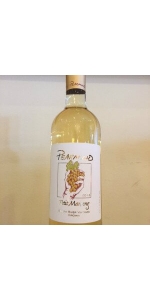Petit Manseng

Petit Manseng is a thick-skinned grape variety grown in France that creates a high quality white wine. This variety is known as “Small Manseng” or “Little Manseng” because of its tiny berries. Typically, the variety grows well in hot and sunny climates with cool evenings, and ripens late in the year. Petit Manseng is quite resistant to disease, and can grow very well in different regions and environments. The grape is typically harvested late in the year, which gives it a sweet flavor and can be used to great dessert wine. This variety can create natural high sugar levels, and is deliberately harvested late to ensure sweetness. Petit Manseng is usually referred to as “Manseng,” even though actual Manseng is a dark, black grape. This grape variety produces wine with high acid levels, low tannins, and creates a golden colored result. Petit Manseng grapes produce wines with nice apricot, fruit, and floral aromas and spicy notes. If the grapes are harvested later in the year, the wine will have higher alcohol content and stronger flavors. This wine pairs well with strong cheeses, foie gras, or it can be enjoyed by itself as a dessert wine. This little fruit produces powerful results.
A refreshing and crisp, dry white with notes of grapefruit and hints of candied pineapple on the nose. Pearmund Cellars is the largest producer of this standout varietal in the Americas.
Wine Information
Alcohol Content: 12.5%
Residual Sugar: 0%
- back
Selected Options
Grape Types
Categories
Pricing
Countries
Regions
Grape Types
Wineries
Organic/Free Shipping
Matthews Winery Columbia Valley Cuvee is made from 65% Merlot, 27% Cabernet Franc, 8% Malbec.
The 2021 Columbia Valley Cuvée sparkles with purple and deep garnet in the glass. Meadow flowers, fresh red berry, black plum, and cocoa powder aromas exhilarate leading to flavors of morello cherry liqueur, cardamom, mountain blackberry, and licorice snaps. This merlot-dominant blend is plush and weighty on the palate with powdery tannins. Dark stone fruits and dusty minerality coat the palate for a long, seamless finish.
Reviews:
A handsome blend, structured and polished, with expressive black cherry flavors accented by tarragon, mocha espresso and toasty spices that sail toward refined tannins. Merlot, Cabernet Franc and Malbec. Drink now through 2031.
-Wine Spectator 93 Points
This Merlot-based blend is a part of the Matthews tradition. Wildly fruity aromatics with whole berries, destemmed aromas driven by red berries, mountain blueberries, and a touch of green peppercorn and mocha dust. A streak of graphite underlines red berries, early season blackberries and a savoury herbal character that mingles complexity with fresh ripe fruits.
-Decanter 93 Points
Oumsiyat Assyrtico is made from 100 percent Assyrtico.
Subtle aromas of white fruits and flinty mineral notes are framed by a delicate floral character. Linear on the palate with a wonderfully refreshing and mouthwatering finish.
RS: 2g/L
The grapes were carefully selected to ensure the healthy and ripe fruit was vinified and then gently pressed. The must was racked and cool fermented in stainless steel tanks at controlled temperatures of 14 to 16°C, with selected yeasts. The wine delivers a crisp, fresh style as it did not go through malolactic fermentation. It was lightly filtered prior to bottling.





